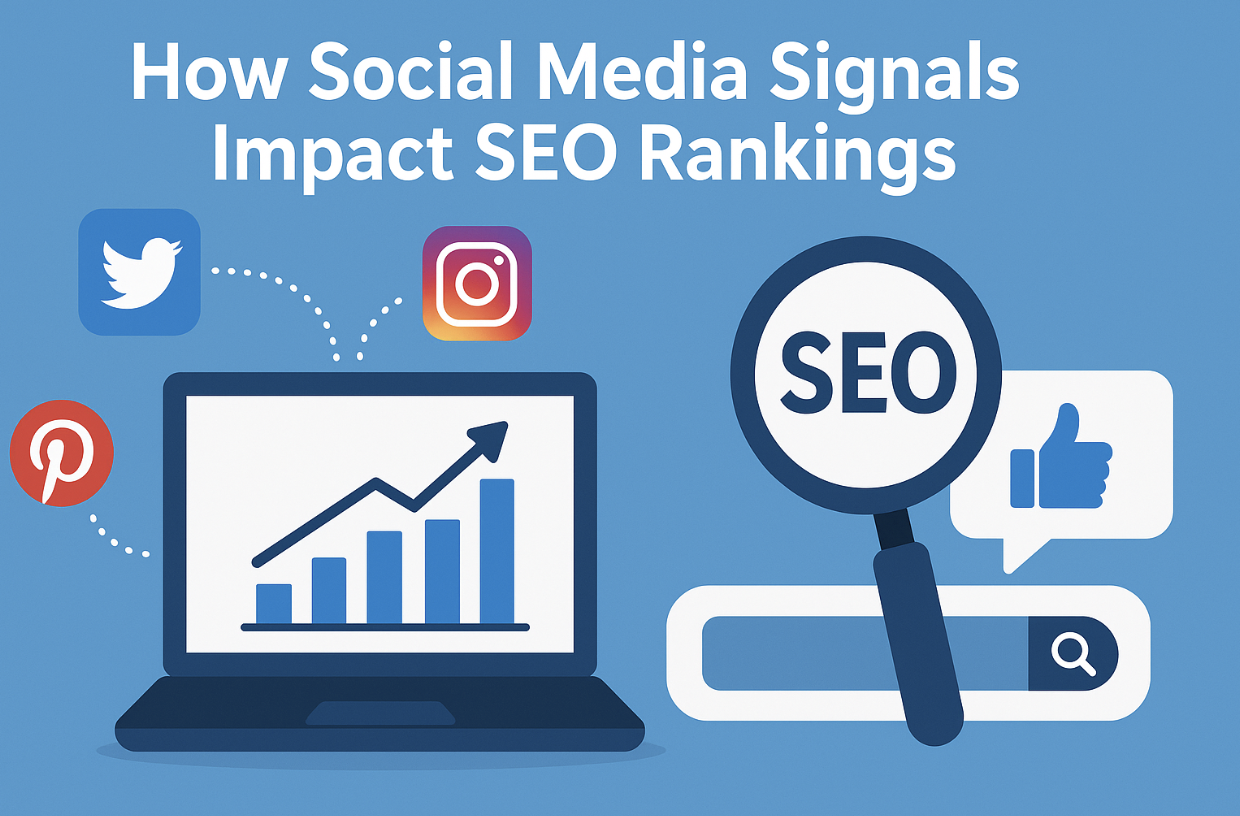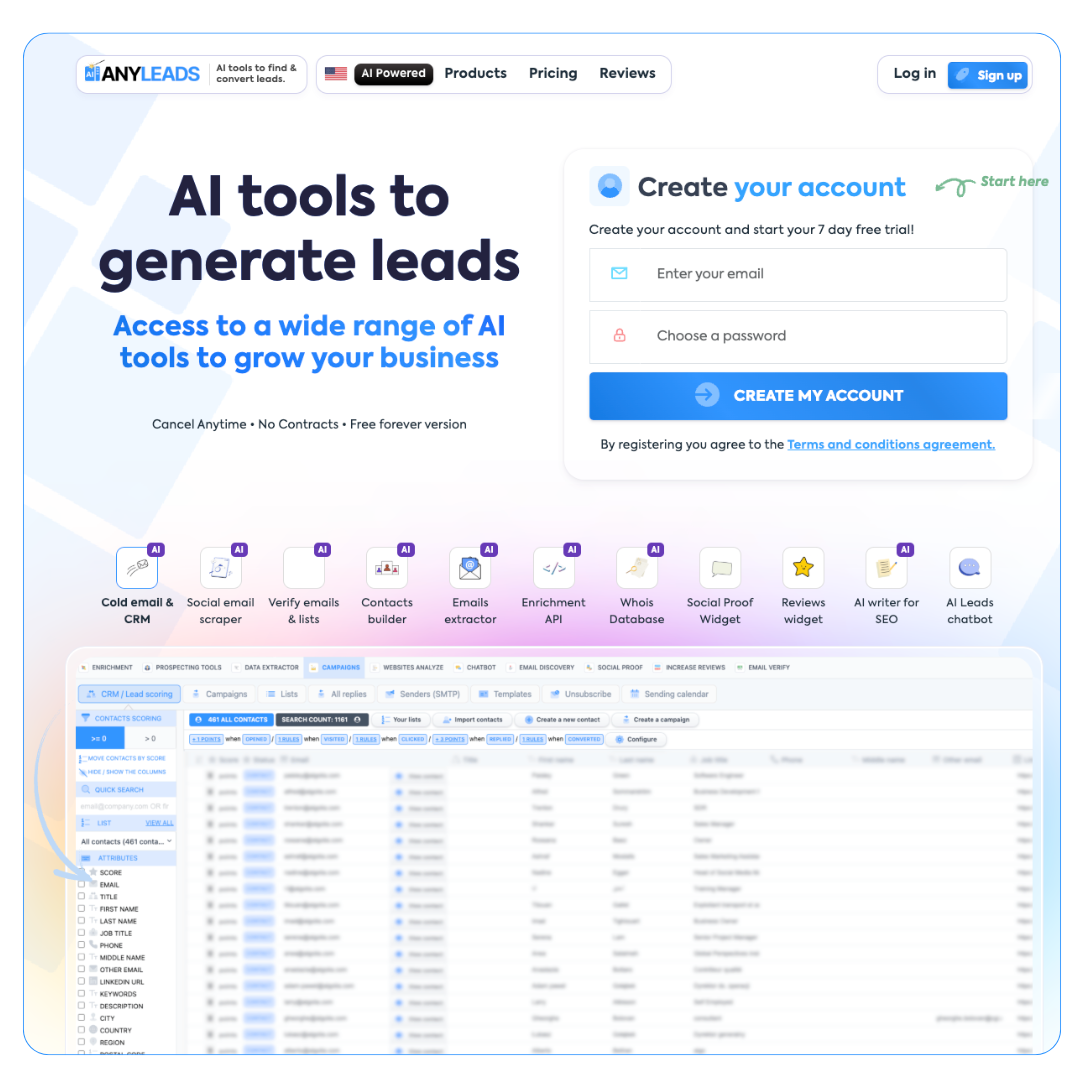 LIMITED SPOTS
All plans are 30% OFF for the first month! with the code WELCOME303
LIMITED SPOTS
All plans are 30% OFF for the first month! with the code WELCOME303

 LIMITED SPOTS
All plans are 30% OFF for the first month! with the code WELCOME303
LIMITED SPOTS
All plans are 30% OFF for the first month! with the code WELCOME303


Do you ever wonder if sharing that go-viral post on X or the uptick in likes your last Instagram Reel received really does help your site rank higher on Google? It's something that every content producer, marketer, and anyone who has ever made something wonders. The brief answer you've typically received is no, they do not. But it's not the entire answer. In the chaotic life of 2025, when social media dictates trends and what's trending, the connection between your social profile and search engine success has never been so straightforward. It's just not what you've always presumed.
Let's set aside the myth of social signals and explore how they work behind the scenes, despite their significant impact. In this article, we'll demonstrate exactly how social media engagement, i.e., retweets, shares, and comments, operates behind the scenes to boost your SEO, pushing your content to the top of the search list.
Understanding Social Media Signals
Social media signals refer to social activity on platforms like Instagram, LinkedIn, or X. They can be compared to the web's digital applause for your content. They include likes and sharing, comments, followings, and even mentions on another person's post or story. They are all good signs of how engaged your audience is with what you are producing. They are the web's voice, signalling what's worth paying attention to.
It is often misunderstood that Google would use these signals explicitly to rank websites. Google has clearly stated so since 2014 and restated its position in 2025: social signals are not direct ranking signals. And that is because social information can so readily be replicated, simply by buying volumes of fake engagement, and the sheer scale of this information does not make it an accurate measure for ordering a site. But half the tale. The magic lies in the impact social media has, which Google takes into account.
The real power of social media is its indirect effect. Rather than being a direct order to place something at the top, social media creates an environment that prompts Google's algorithm to recognize and rank it. Their real magic lies in how they send off other, older ranking indicators. It's dominoes. A single viral social media update can trigger a chain reaction of events that ultimately gives your SEO performance a significant boost.
Social media is the best way to drive a lot of traffic, which is also highly engaged, to your website. Once your content becomes viral on social media, it leads to a sudden spike in traffic on your website. This activity is an intrinsic measure of search engine relevance. Traffic from social sites to your website is a signal to Google that your content is highly desirable and valuable to a large audience.
Google also tracks in-site behavior, as well as total traffic. Activity by social site visitors on-site can be highly insightful. If someone visits your site through a social share and spends time reading your content or using a tool, it indicates that your content is valuable. That is called dwell time. Unless this visitor clicks back immediately to the search results page, it is as good as a low bounce rate. High dwell time and low bounce rate are both good user signals to Google that go on to support your content further, clearly demonstrating user intent and providing a satisfying experience.
A strong social media presence, combined with an active online presence, builds a powerful and authoritative brand. It is your business voice extended and a platform for displaying your thought leadership and authority. As your content gains momentum, customers will increasingly go out of their way to specifically seek out your brand name. The more branded search terms like this, the more it signals to Google that your brand is being heard as more established and authoritative as a voice in its space. The boost in brand trustworthiness boosts your keyword rankings across the board.
Social media signals and SEO ranking signals do not rely directly on one another; instead, they are highly interdependent to perform optimally. You can't have one or the other if you require utter online success. Social media presents the opportunity, and SEO takes advantage of it.
Consider the information on your website as a product and social media as a sales force. Nobody will ever buy even the most excellent product in the universe if they've never heard of it. You can create the best-optimized blog post in the world, but without a way to distribute it, it may never receive the first click and attention needed to start ranking.
Social signals initiate the process of SEO rankings. They don't occur in a vacuum; they happen because your content's so compelling that people feel like they need to share it. Sharing generates more traffic, more branded search, and most importantly, more backlinks. All these are ranking variables in direct correlation with Google's heavy use of them. Social media then fuels and powers the SEO cycle, whereby there is a feedback loop of continually escalating visibility and authority.


This is the treasure trove: if your content goes viral on social media, social influencers, news outlets, or bloggers may link to it. You also can create viral social media campaigns by collaborating with influencers using platforms like Stack Influence. Backlinks are among the strongest SEO ranking signals out there, and social media is an incredibly effective source for getting them.
When your content is transformed into a social blockbuster, whether it's an academic write-up, a beautiful infographic, or a helpful tool like an image resizer that makes users’ tasks easier, it receives much better visibility. It increases the chances so high that it becomes certain that your content will be found by content creators in your niche, who always seek quality content to draw inspiration from.
For example, an X trending thread of green products will get you links from green blogs. Consider the example of Glossier's 2024 campaign. After their new skincare product Instagram reels went popular, they received backlinks from well-known beauty blogs and saw an increase in SEO for keywords like "clean skincare." The content clearly accumulated links from high-authority websites since it was so interesting and shareable.
Make it visual: Shareable visuals or videos get more shares.
The problem's solution: Users are more interested in tutorials or guides that offer a solution.
Your strategy has to be platform-specific. Here's how to use your social media presence for SEO success in 2025.
Instagram Stories and Reels are quite useful for increasing traffic. Encourage them to ask for more by providing them with pieces of information or insider knowledge. Utilize link stickers on Stories to make clicks frictionless and smooth. Kindly utilize engaging visuals to tell a story that draws your audience and gets them visiting your site for more.
To companies, marketing material that gets contentious (i.e., industry news or thought leadership content) can gain backlinks from specialty websites. Join the conversation to further it and drive traffic back via it. LinkedIn is a terrific place to help your firm's brand become an authoritative voice within its category. For example, if you are a Webflow development agency, consistently sharing ROI-driven benefits of the platform, along with solutions tailored to your target persona, can help you build unmatched organic authority on LinkedIn.
X is trend-addicted and devours trending content. You'll be heard if you jump on popular hashtags or post a relevant discussion. Within hours, a single trending thread may increase your site's SEO signals by hundreds of thousands of clicks. You may become a source of current news for your brand by spotting patterns early and providing contextual opinion.
TikTok's 2025 algorithm is unmatched in terms of virality. Create short, authentic videos that highlight your website in your bio. A single viral video can generate significant traffic, as seen with brands like Gymshark. Be honest and relatable.
To see the effect of your work, you should be able to track its results. Utilize Google Analytics in order to view how many visitors are arriving on your site through social media. Monitor social media backlinks using Ahrefs or SEMrush. Compare keywords both before and after mass posts and monitor whether trends appear. Observe whether increased social activity is creating improved search ranks.
Don't Chase Vanity Metrics: A common trap is buying fake likes or followers. Google doesn't count fakes, and social sites will penalize fake engagement. Instead, choose authentic connections.
Be Flexible with Algorithm Shifts: Social sites and Google change algorithms all the time. In 2025, X's new AI-led trends and Google's user-focused pledge mean you need to be flexible.


Social media analysis is an essential piece of any modern marketing campaign, but it won't make you an overnight Google sensation. You're laying the foundation for future SEO success through consistent production of quality, organic, and shareable content and establishing an actual community. Take a look at your social media plan, try a new kind of post, and anticipate a jump in your standing. Your website will finally be in the spotlight!
Do social signals truly boost Google rankings?
No, Google doesn't utilize them as a direct ranking signal, yet they drive traffic and backlinks that optimize your SEO.
What platform is ideal for SEO in 2025?
It's all about your audience. Instagram and TikTok are ideal for visuals, LinkedIn for B2B, and X for live buzz.
3. How do I get my content to go viral?
Direct to value: solve a problem, entertain, or inform. Use visuals and explicit calls to action.
4. Are social media platforms suitable for local search engine optimization?
Indeed! Posts using local hashtags and location tags increase traffic locally and raise your local search ranking.
How do I measure social SEO effect?
Use Google Analytics for traffic, Ahrefs for links, and check for branded searches or keyword rankings.
Author Bio
Amelia Jackson is an SEO and link-building specialist with years of experience helping websites grow their online authority. She focuses on creating effective outreach strategies, earning high-quality backlinks, and driving organic traffic through proven SEO techniques. Amelia is passionate about sharing actionable tips for marketers looking to boost their site’s visibility and domain authority.